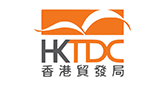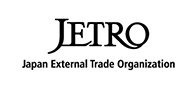Internet of Things (IoT) & Data Analytics OVERVIEW
To put the massive scale and potential of Internet of Things (IoT) technology in perspective, consider the following:In a world of roughly 5 billion people with access to the internet (about two-thirds of the world’s population), about three times as many (14.6 billion) objects will be connected to the internet by 2022, according to projections by network device firm Cisco.Over the very long term, trillions of objects, points of geography, buildings, devices, appliances, vehicles, etc. Spending on IoT worldwide was estimated at $745 billion for 2019 by analysts at International Data Corporation (IDT).
Imagine a modern passenger cruise ship, a behemoth that may transport 6,000 passengers and 2,500 crew members over long distances.The vast number of complex on-board machines and systems are both mission-critical and subject to potential failures.Consequently, the use of digital, M2M communications via an on-board network is a logical way to keep the ship operating smoothly while ensuring passenger safety and comfort.Sensors can gather multiple points of data on the massive engines that power the ship—temperature, oil condition, fuel use and vibration.Such sensors might detect vibrations that indicate a potential bearing failure that could lead to an engine shut down.Preventative maintenance could be planned.
Other sensors might determine that the air conditioning system is having difficulty maintaining the correct temperature on A Deck.Yet another sensing system might detect a leak in a fuel bunker.Continuous gathering and analyzing of such data can not only boost safety but also lead to savings of massive amounts of time, fuel and expense.Crew members on board can take appropriate preventive actions in many cases.Other situations may require dockside repairs.At the same time, imagine this ship communicating its location, speed and direction 24/7 to other ships nearby for safer passage.This occurs today via AIS (Automatic Identification Systems).
Now, imagine the same types of sensors applied to a manufacturing plant, a refinery, an airport, a commercial airliner, a hotel or a shopping mall.IoT will be utilized in all types of facilities and systems.
Finally, imagine the remote gathering of such data from an entire fleet of cruise ships, aircraft, refineries or manufacturing facilities.Highly advanced computers at company headquarters can analyze massive amounts of data coming in from thousands of remote facilities at once, apply AI to the data and make predictions (“predictive analytics”) about changes needed or future equipment problems.Analysis of IoT data can show what challenges loom, what supplies are needed, which items of equipment need repair or replacement, or which theoretical new ideas will prove to be effective once they are applied to real-life situations.
The larger the pool of data, the more observable the patterns and the better the accuracy and outcomes of the process. IoT data is limited only by the number of sensors that are embedded in a system or structure, and the price and capabilities of such sensors are improving constantly.
IoT isn’t only about industrial or transportation systems.It can also be applied to highly personal situations.For example, watch-like devices, worn on the wrist, can gather a wearer’s information such as heart rate, exercise and sleep.The information can be transmitted to systems in the cloud where the wearer’s health can be monitored 24/7.M2M systems in sophisticated parking lots are already alerting drivers to the locations of empty parking places.“Smart meters” that monitor electricity usage at homes are sending usage data to electric utilities’ headquarters utilizing IoT.In fact, this was the first widespread home application of IoT.
At a 2019 National Hockey League game, chip-maker Intel attached sensors to pucks as well as to players’ uniforms.This enabled viewers with smartphones to watch enhanced real-time stats, such as how fast a puck is traveling or how long it took a player to move from one end of the rink to the other.Eventually, advanced sensors may become standard at major league games, enabling fans to enjoy a radically altered viewing experience.
One of the more promising advancements is the synergy between M2M communications and a technology known as “machine learning” (one of the keys to AI).In 2014, Google spent nearly $600 million to acquire UK-based DeepMind, an intensive machine learning research group.The main point is that software can be trained by being constantly fed data, queried as to its meaning, and then receiving feedback a machine’s decisions.It is essentially training a machine to respond correctly to data of a given nature or to data within a given set of circumstances.This makes M2M the vital link in many types of machine learning efforts, because M2M is the first step in gathering many types of data.
















